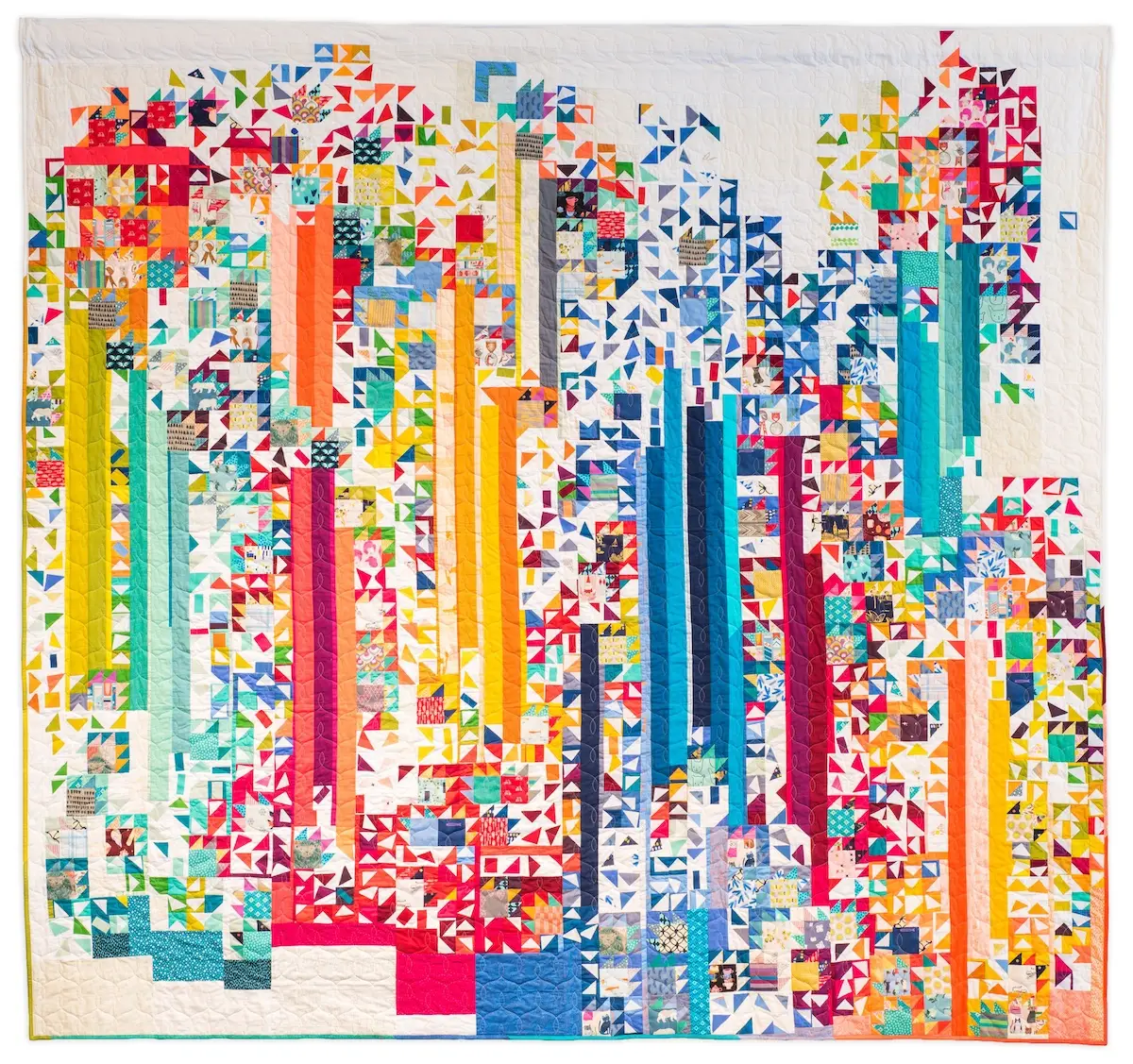Andrea Tsang Jackson has always loved making things—whether it was crafting as a kid or designing quilts that tell powerful, personal stories. With a background in architecture and a passion for teaching, she brings color, meaning, and connection to everything she creates.
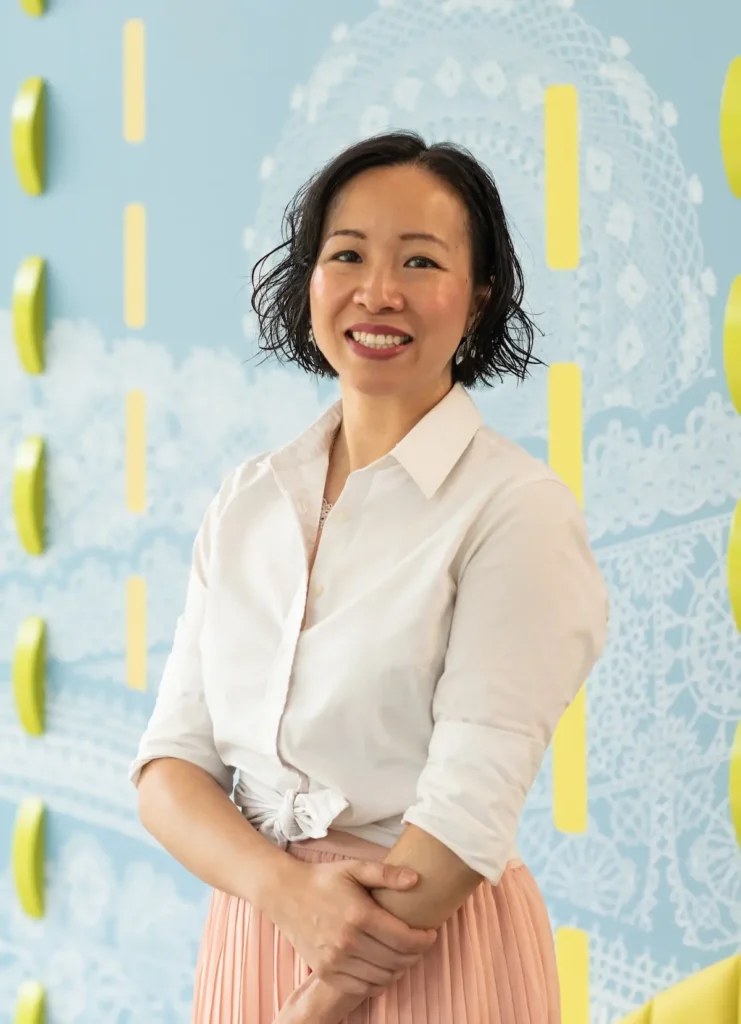
How did you find yourself on an artist’s path? Always there? Lightbulb moment? Dragged kicking and screaming? Evolving?
I have always been a maker. On my kindergarten report card, my teacher noted that I could spend a very long time on any craft activity. In university, I studied architecture, which helped me see the world through a design lens. I worked in different design-related fields after that, and once I had kids, started to quilt. I saw quilting as a way to express my thoughts and explore questions — about belonging and place, about form, about craft and art.
How long have you been quilting and designing? How did you get started?
I made one quilt for each of my two kids, starting in 2011. But it was in 2016 when I joined my local chapter of the Modern Quilt Guild that I really started to take my interest further.
As an Amazon Associate I earn from qualifying purchases. Read more about our affiliate linking policy.
At the time, I had a strong interest in geometry and created birthstone wall hangings and pillows to sell at a local craft market. From there, I designed patterns and wrote a pattern book, Patchwork Lab: Gemology, took on art commissions, and participated in my first artist residency at the Canadian Museum of Immigration at Pier 21.
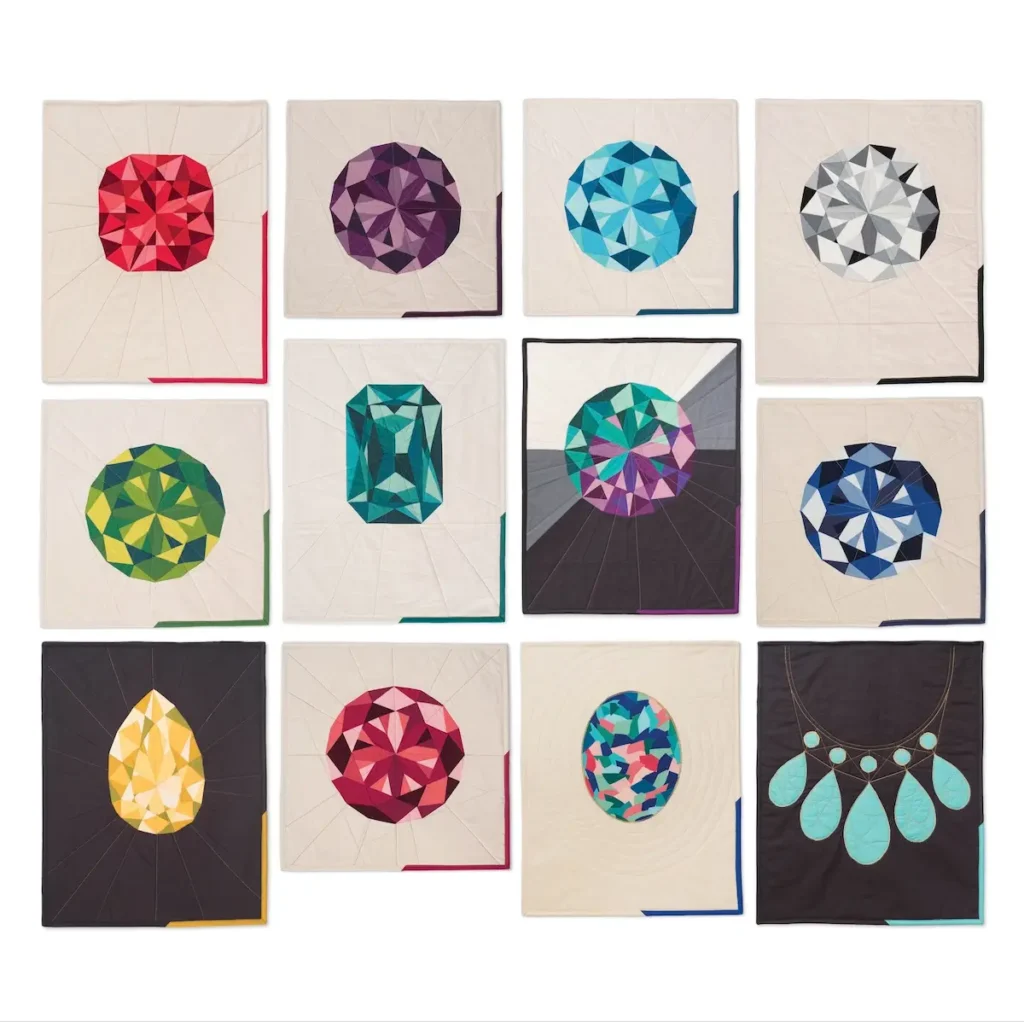
Where do you find inspiration for your designs?
I have two distinct parts of my work: quilt design and teaching which serves quilters, and then my art practice which is more exploratory.
On the quilt design and teaching side, I would say that colour and form really inspire me and I want to pass that on to other quilters. Almost all my patterns have some sort “teaching” element – whether that’s colour theory, a scant 1/4″ seam allowance, or something else.
On the art practice side, stories are a very large source of inspiration for me — largely other people’s stories, but I’m starting to delve into my own.
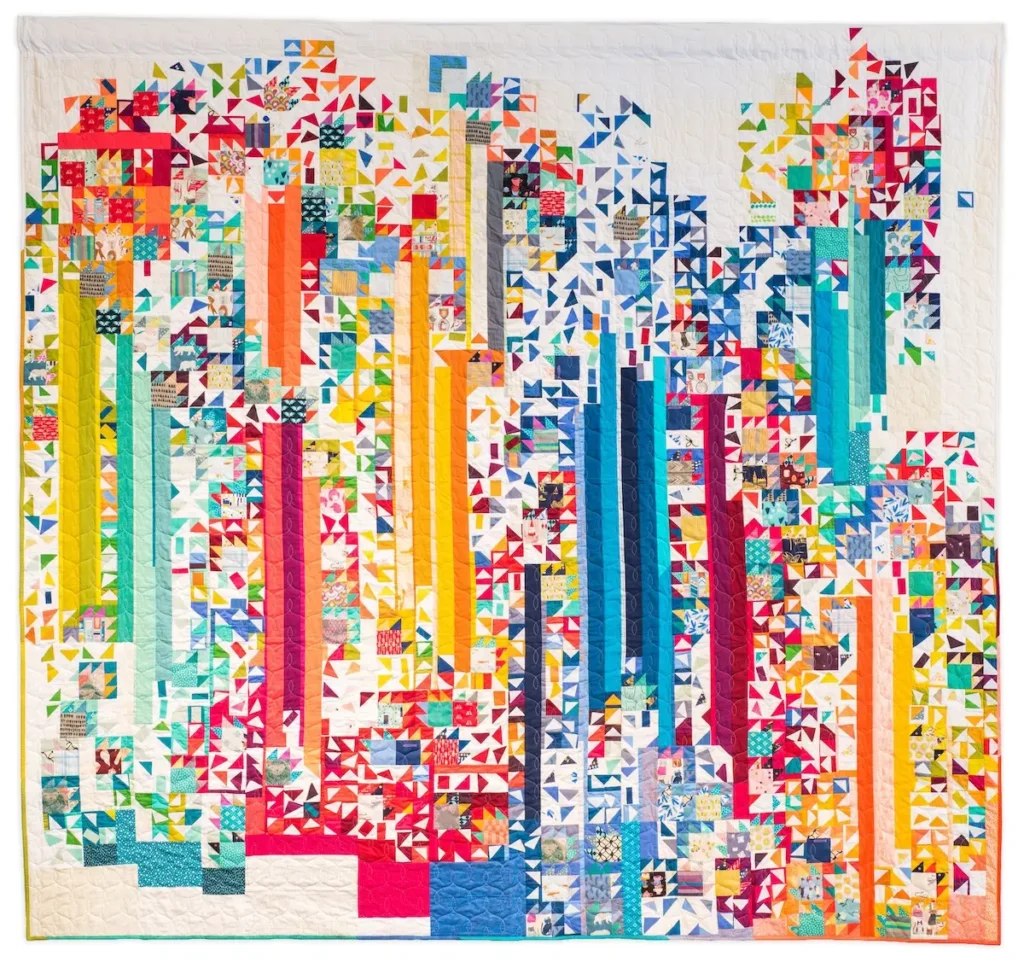
Describe your creative space.
My studio is in a building about 1 km from my home. It’s in artists building with a contemporary art gallery and community arts organization on the ground floor. I have a 250 sq.ft. studio upstairs, alongside other artists and creatives.
When you enter the space, I have a storage and archive area with patterns, stored quilts, supplies, archived projects, etc. An IKEA shelf separates that area from the main working space, with a cutting table on wheels, a table by the window with my sewing machine, a design wall, and a fun wallpapered wall for photos. See more about my newly revamped studio space at the Leland Ave studio tour series.
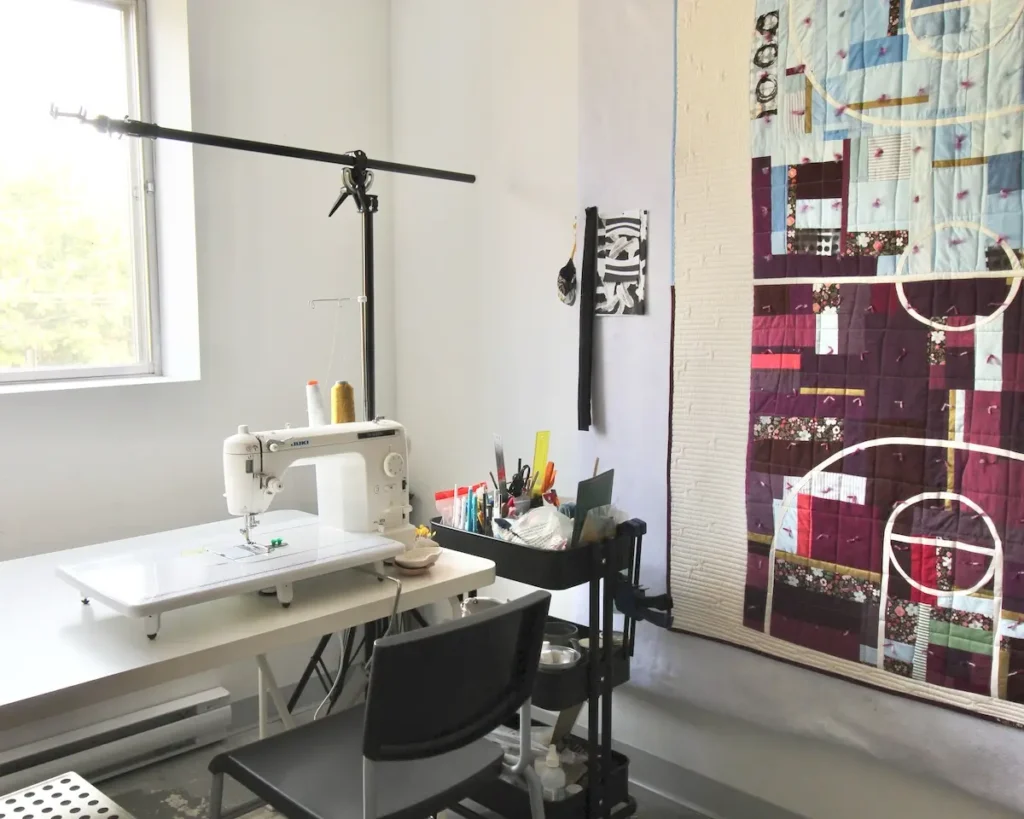
Scraps. Saver? Or be done with them?
Lately, I’ve been very interested in using my scraps and fabric stash. And I really want other people to use theirs, too! Yet I am not fastidious about keeping them and squeezing every last bit out of them. I use what I can but I don’t save anything smaller than 2″.
The idea of using up scraps has led me to release a few quilt block patterns this summer that don’t require yardage, such as the Altitude block, which is about all the different skies that we get to witness – a sunset, dusk, the Northern Lights.
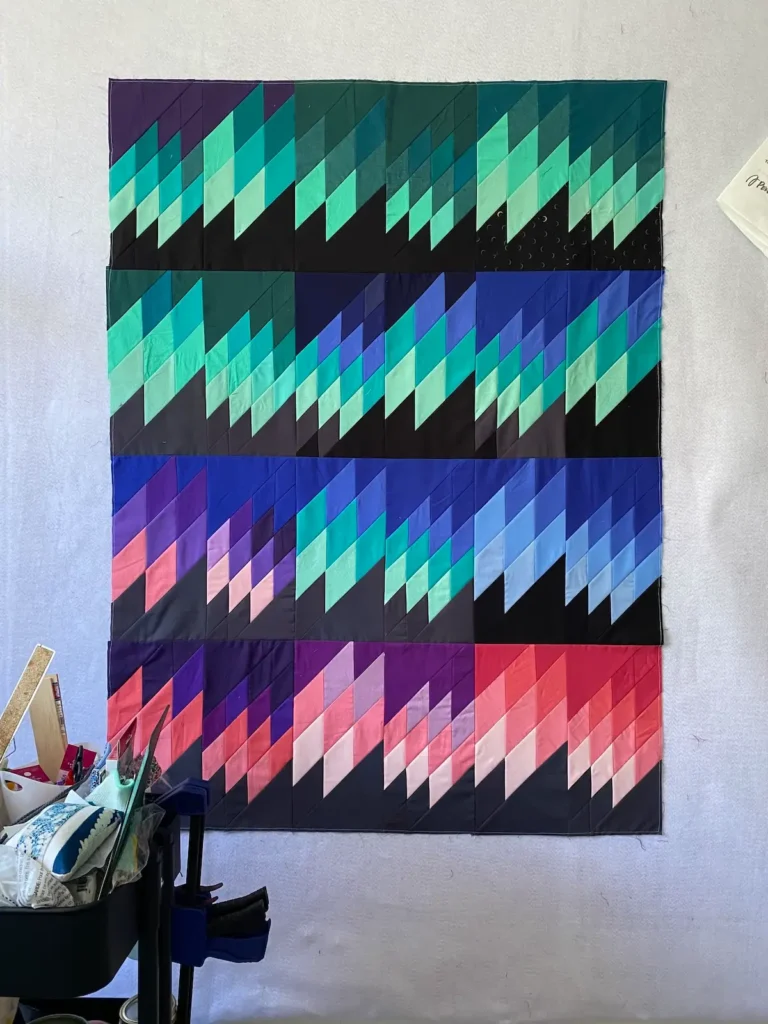
What plays in the background while you work? Silence? Music, audiobooks, podcasts, movies? If so, what kind?
Usually I listen to podcasts when I’m working on a quilt sample or something methodical with my hands. I find audiobooks have too long an arc for my brain to follow!
If I have a 2-3 hour block of “making” time, I will listen to a musical soundtrack which provides me with a full story in that timeframe. If I’m writing, it’s usually Bach — it’s got forward momentum to it and doesn’t interrupt my thoughts with lyrics.
Can you tell us about the inspiration and process of one of your works? How does a new work come about?
The inspiration behind my first public art project, In Conversation, is six stories of craft. It’s artwork for a hospital parking garage intertwines culture and craft, using the building as a canvas for telling stories and experiences of individuals involved in craft traditions from around my province.
The journey of this piece was not straightforward — I spoke to many community members and leaders, taking stabs in the dark about who I might connect with and whether their stories would bring about anything. Partway through, I realized my role was more like that of a journalist or documentary filmmaker — looking for the stories and representing them in a fair but interpretive way.
You can read about the stories, listen to interviews, and see visuals at the artwork’s dedicated website, In Conversation.
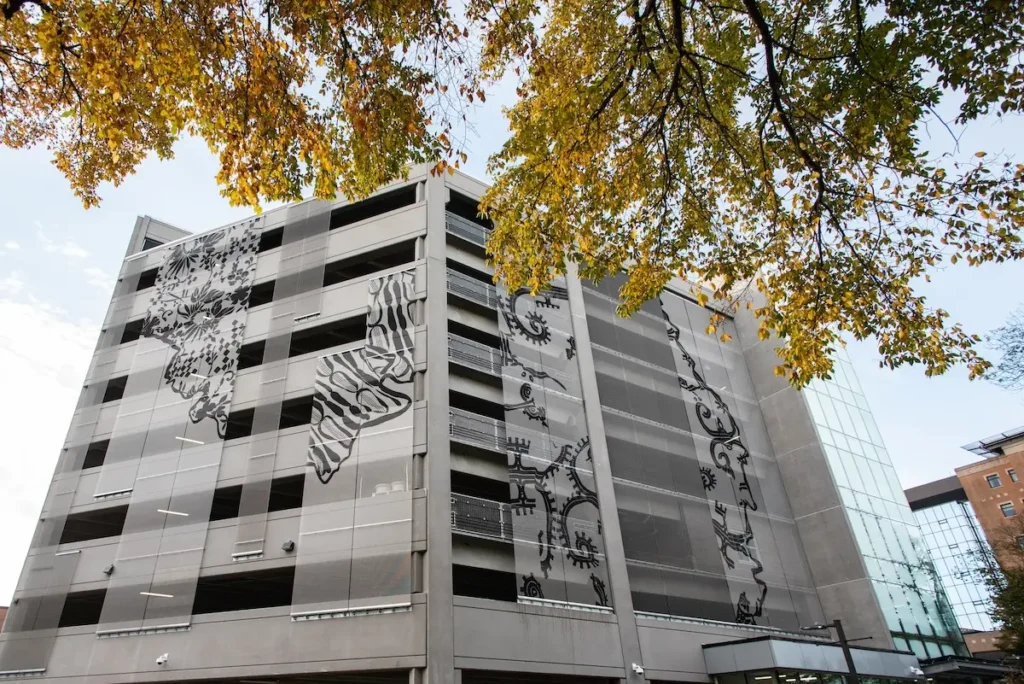
Which part of the design process is your favorite? Which part is a challenge for you?
I really like the research and design part of a project. I like it when all the doors are open and I can go down a rabbit hole, learn new things, and then distill them into a cohesive set of ideas.
I get really excited about connecting ideas to an artistic expression in a specific way that makes sense only to the context of the project at hand. About three-quarters of the way through a project, I usually run up against the challenge of boredom!
The idea generation phase and figuring out is over, and I’ve already spent a good chunk of time “in the zone” and making (which I enjoy immensely!). But then I have to keep doing it, and then it feels like a marathon to get to the finish line.


Where can people see your work?
A lot of my processes are spelled out in my newest book, Quilting: A Modern Creative Journey through an Age-Old Craft. It combines essays and hands-on projects that weave traditional craft with contemporary creative practice. Through five “Quests” I guide quilters to develop their artistic voice while exploring techniques that push the boundaries of traditional quilting. You can find signed copies on my website. You can also get it at Indigo (Canada) or through Microcosm (USA).
You can find much of my work, both modern quilting patterns, public art, and other artwork at 3rdstoryworkshop.com or on Instagram: @3rdstoryworkshop.

Interview posted August 2025
Browse through more inspiring quilts and stories on Create Whimsy.

